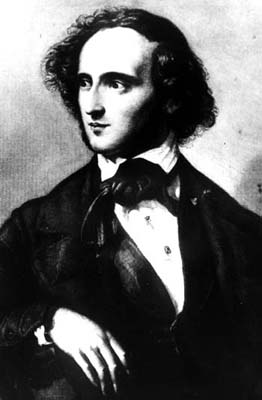|
||
|
Mendelssohn's music for A Midsummer Night's Dream was written in two parts. The overture dates from 1826 when he was seventeen years old. It was inspired by a translation of the play into German, and was intended as a concert piece rather than as incidental music. It is generally regarded as one of Mendelssohn's finest works for the brilliance of his orchestration and scene painting. It follows the classical sonata form used extensively by Haydn Mozart and Beethoven, with the main sections punctuated by four chords on the woodwinds, heard at the outset. The music describes the fairies, the grandeur of the court of Thesius, the four lovers and the rustics including the braying of Bottom with the asses head. It was premièred in Szczecin on 20 February 1827. This was Mendelssohn's first appearance at a public concert and he had to travel eighty miles through a snowstorm to get it. In the same concert he appeared as soloist, playing one of the pianos in his own Concerto in A-flat major for 2 pianos, followed by Weber's Konzertstück in F minor. To demonstrate his versatility further he joined the first violins for the last work of the concert: Beethoven's Ninth Symphony. The incidental music to accompany a production of a Midsummer Night's Dream was written sixteen years later in 1842, following a commission from King Frederick William IV of Prussia who had greatly enjoyed Mendelssohn's music for Sophocles' Antigone. The play, with both the overture and incidental vocal and orchestral music was first produced on 14 October 1843 at Potsdam. The Nocturne, with its famous opening for horn and bassoons describes the sleeping lovers and was used as an interlude between Acts III and IV. The wedding march was placed between Acts IV and V. It is certainly the best known of all Mendelssohn's works. Mendelssohn's Overture, Nocturne and Wedding March from the Incidental Music to A Midsummer Night's Dream were performed by the Portobello Orchestra on the 12th July 2014, conducted by William Church. back |

